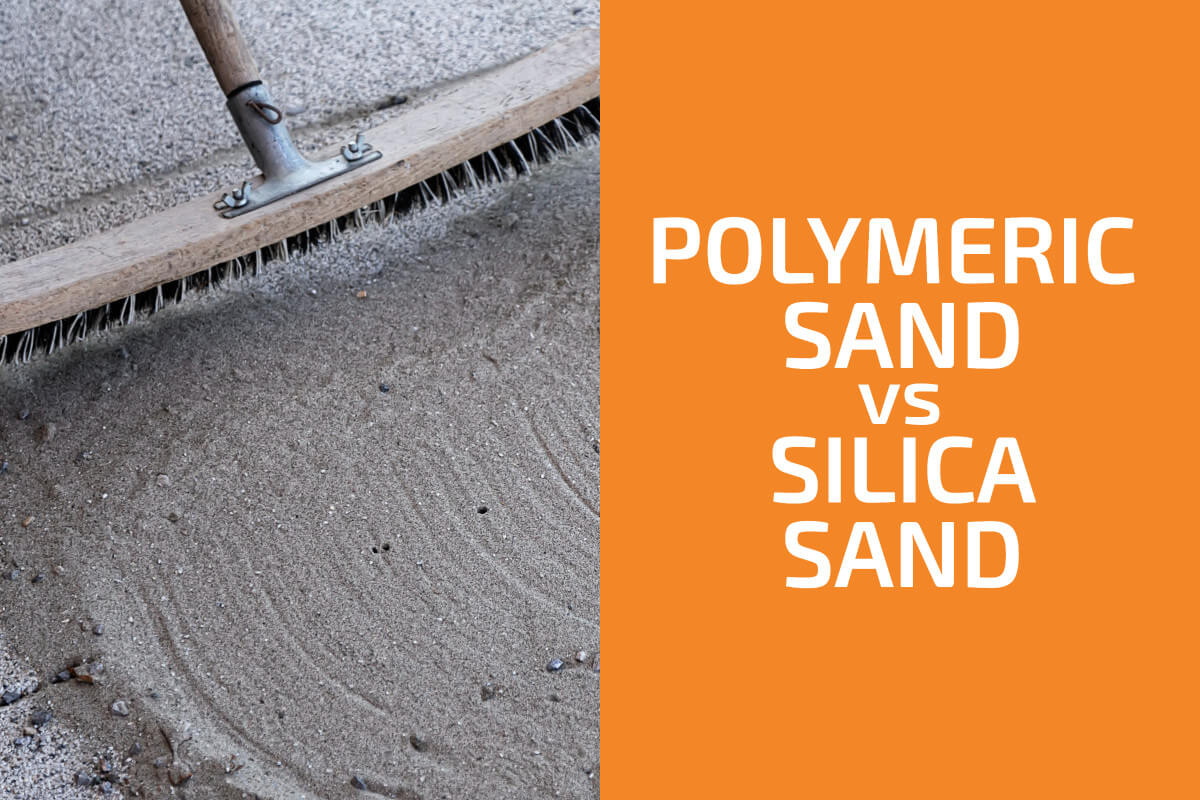
Although polymeric sand and silica sand both have the word sand in their names, they’re actually extremely different things. Today we want to compare these two materials. We’re going to talk about exactly what they are, what makes them similar, what makes them different, and what they are both best used for.
Polymeric Sand and Silica Sand: The Basics
Before we start talking about similarities and differences, let’s first figure out what both of these types of sand actually are.
What Is Polymeric Sand?
First, we have polymeric sand, a special type of sand most often used to fill gaps in between pavers and to lock them into place. This is a very fine sand that is made of crushed stone combined with various additives to help lock the fine particles of sand together.
Polymeric sand contains binding agents, which when mixed with water, cause polymeric sand to begin hardening, curing, and drying.
You might think of it almost like a special type of cement or mortar. What is interesting is that polymeric sand often contains crystalline silica and quartz, along with other synthetic or chemical binders.
What Is Silica Sand?
We then have silica sand, also known as industrial sand, which consists of very fine pieces of quartz, combined with other minerals, which could be clay, silt, salt, dust, and various other powders. This is of course very different from regular sand, which is really just ground-down rock.
Silica sand is usually white, pink, black, or green. In terms of its uses, silica sand is one of the primary components used to make glass.
This substance is also used for bunkers on golf courses, to make calcium silicate bricks, for water filtration, for metal casting, and is often added into specialty cement, mortar, and asphalt mixes. As far as at-home use goes, most people have absolutely no use for silica sand.
Similarities of Polymeric Sand and Silica Sand
Now that we know what both polymeric and silica sand are, let’s figure out what makes them similar.
1. They’re Both Sand
The most basic similarity here is that both of these things are of course sand. They are very different types of sand, but sand nonetheless.
2. They Both Contain Silica
Another similarity here is that both of these types of sand do contain silica. Silica sand consists mainly of silica, whereas polymeric sand only has a small amount of silica used as an additive.
3. They’re Both Very Fine
Another similarity shared by both polymeric sand and silica sand is that they are both extremely fine. To the touch, they feel more like a fine powder than anything else. They aren’t nearly as coarse as regular sand that you would find on the beach.
4. They Can Both Be Poisonous
What is important to note is that silica can actually be quite poisonous when inhaled. There is a lung condition known as silicosis which is a result of inhaling too much silica.
Differences Between Polymeric Sand and Silica Sand
Now that we know what makes them similar, let’s figure out what makes these substances different.
1. The Composition
As noted in our descriptive section at the beginning, these two types of sand are composed of different things. Polymeric sand is regular fine sand mixed with silica, quartz, and other synthetic binders. Silica sand consists mainly of silica, quartz, clay, dust, and other such substances.
2. Synthetic vs. Natural
One of the most fundamental differences here is that silica sand is taken from the ground as is. It is extracted from the ground and already comes in its final form. Polymeric sand is technically synthetic or man-made, as the various components are mixed together by human beings.
3. Binding Properties
Another huge difference here is that polymeric sand acts kind of like cement. When you mix water with it, it begins to harden and cure. On the other hand, silica sand does not do this at all. It will not bind together due to water.
4. Applications
Perhaps the biggest difference of all is what these two types of sand are used for.
Polymeric sand is usually only used to fill paver joints. Silica sand, on the other hand, is used for making glass, metal casting, for making special types of cement and mortar, and much more. Silica sand is generally only used for large-scale industrial purposes.
Polymeric Sand vs. Silica Sand: Which of the Two Should You Use?
If you are looking to fill gaps in between pavers and lock them down, or even to fix cracks in a concrete driveway, then it is polymeric sand you need. Realistically, when it comes to silica sand at home, you just won’t have any use for it.
Unless you are making your own glass, casting metal, or making your own specialty cement mixes, you just don’t have any use for silica sand at home. This is an industrial product. That said, if you happen to own a golf course and need something to fill bunkers with, silica sand is a good choice.
Summary
As you can see, although both are types of sand, their applications really couldn’t be any more different.
How Does Polymeric Sand Compare with Other Materials?
Read the articles below to see how polymeric sand compares with:
